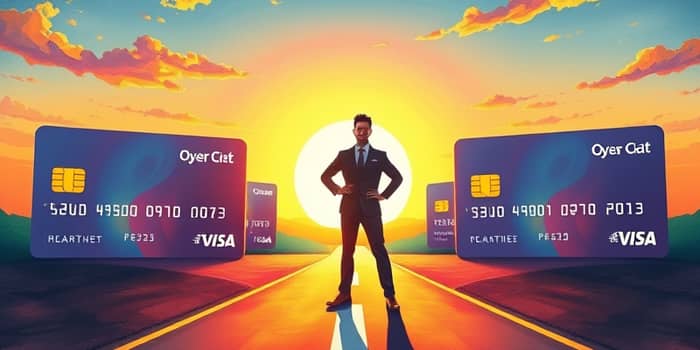
In today’s fast-paced financial world, opportunities often arrive in unexpected forms. One such opportunity can come in the mail, your inbox, or even a phone call: the pre-approved credit card offer. While it may seem like a simple piece of paper, it holds the key to unlocking new avenues for your financial journey.
By understanding how these offers work and using them wisely, you can transform an ordinary invitation into a powerful tool for growth. This article will guide you through every step, from the prescreening process to building a stronger credit future.
At its core, a pre-approved credit card offer is an invitation extended by a card issuer after conducting a soft inquiry into your credit profile. Unlike a hard pull, this soft check leaves no mark on your credit score, signaling that you already meet basic qualification criteria.
Receiving such an offer indicates that the issuer has determined you may qualify for specific terms, be it a low introductory rate, cashback rewards, or travel benefits. However, it is not a guarantee of approval—it’s a strong suggestion that your profile aligns with the issuer’s standards.
When credit card companies search their consumer databases, they employ sophisticated algorithms to identify candidates who fit certain financial benchmarks. These criteria often include credit score ranges, payment history, existing debt levels, and length of credit history.
Because the initial check is a soft inquiry, you can receive multiple pre-approved offers without affecting your score. This stage is purely informational for the issuer, sparing you any immediate impact while alerting you to potential opportunities.
Understanding the difference between pre-approved and pre-qualified can save you from misconceptions and missteps. While both terms suggest potential eligibility, they originate from different processes and carry different weight.
Receiving a pre-approved offer can feel like winning a golden ticket—but the rewards extend beyond mere validation. These offers often come with:
By securing one of these offers, you streamline your application process. Instead of fishing for cards that might reject you, you target one that already recognizes your profile.
No financial product is without its caveats. Pre-approved offers can be tempting, but a careful review of terms is essential. Potential pitfalls include:
Always scrutinize the fine print. The promise of generous rewards can be outweighed by unfavorable fees and rates if you’re not vigilant.
The beauty of pre-approved offers lies in their use of soft inquiries, which do not harm your score. However, once you decide to apply, a hard inquiry will appear. This change can temporarily lower your credit score, typically by a few points.
Over time, responsible usage—timely payments and low credit utilization—can offset this dip and even improve your score. Approaching each application with a clear plan ensures that short-term fluctuations lead to long-term gains.
Turning a pre-approved offer into a win requires strategy and discipline. Consider the following actions before you apply:
Pre-approved offers are stepping stones, not finish lines. To truly unlock your credit potential, focus on sustainable habits. Regularly review your credit reports, correct any errors, and diversify your credit mix with installment loans and credit cards.
Remember, each financial decision shapes your long-term health. By using pre-approved offers wisely, you bolster your score and open doors to premium products like mortgages and auto loans.
Pre-approved credit card offers can be transformative when approached with intention. From streamlined applications to tailored rewards packages, these invitations can elevate your financial toolkit.
Yet, with great power comes great responsibility. Carefully weigh the benefits against potential downsides, monitor your credit health, and maintain disciplined spending practices. When harnessed correctly, pre-approved offers become more than a piece of mail—they become catalysts for your financial growth, guiding you toward a brighter and more empowered future.
References













